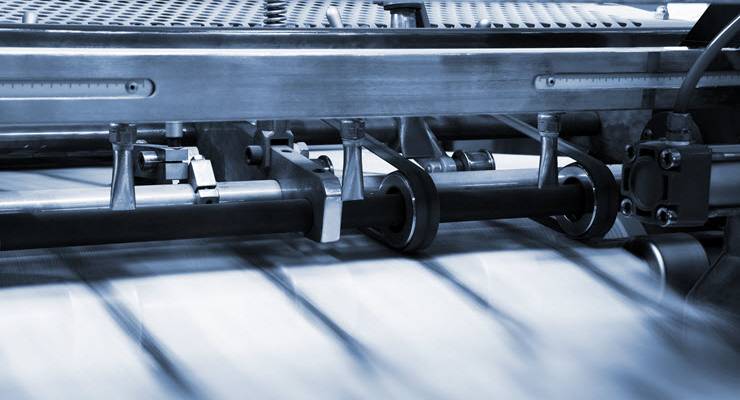
Australia’s press took a big step this week in its decades-long journey from venerable manufacturing process to nostalgic metaphor with the accelerated closure of those production plants where newspapers are — or were — printed.
The resulting consolidation will see News Corp making a further change, reducing the size of its metropolitan papers to the shorter size technically-known as the “bastard measure”, beginning with The Courier-Mail.
It’s about matching capacity with demand (as the Nine-Fairfax spin-off Australian Community Media (ACM) says) and reducing paper costs. And, in some cases, it’s about unlocking the real value in printing plants — the land they sit on.
But by diminishing nation-wide capacity, it threatens to lock out new players struggling to emerge in the news deserts created through masthead closures. And it adds a few more hundred jobs to the tens of thousands of printing jobs — some of them venerable crafts dating back to Guttenberg — shed over the past 30-odd years.
“Stop the presses!”: A century ago, the power of the printing process inspired poets from Kipling to Lawson. It became a staple of Hollywood drama. A more sentimental generation of journalists still light up at the memory of that moment when the newsroom floor would vibrate from the presses starting up in the basement.
This week, News Corp has confirmed that it’s moving ahead with the consolidation and reduction of its printing capacity to a single plant (with, on current plans, a single press) between Sydney and Townsville.
At the same time, ACM announced it plans to close four print plants in Ballarat, Murray Bridge, Wodonga and Canberra, leaving its major plants in Tamworth and North Richmond.
After the mandatory two-week consultation period with unions closed on Tuesday, News confirmed that its large Murrarie plant — with its four big presses in suburban Brisbane — will be closed in stages between August and April with the loss of about 120 jobs. The company’s printing will be consolidated inland from the Sunshine Coast at the Yandina plant it inherited from its takeover of Australian Regional Media in 2016.
The Yandina press will use a single press to print the company’s remaining south-east Queensland papers — The Courier-Mail and Sunday Mail, the Gold Coast Bulletin and the Toowoomba Chronicle. It will also print local copies of The Australian, The Daily Telegraph and Nine’s The Australian Financial Review.
There’s form here that will concern independent publishers. When Horton Media, Queensland’s last independent printer, closed two years ago, some small independent papers had to shift printing to Sydney and truck their copies to the state due to local capacity constraints. Fairfax’s print plant at Ormiston (and in NSW’s Hunter), closed the same year as part of a printing and distribution agreement with News Corp.
Along with Murrarie, News Corp shuttered its Rockhampton print centre (where its now wholly digital central Queensland titles were printed) at the end of June. Its print centre at Warwick on the Darling Downs will close on Friday, with about 50 jobs going, leaving only Townsville in north Queensland to print the Townsville Bulletin and Cairns Post.
In Victoria and southern NSW, the ACM closures leave News Corp as the major surviving print owner, although they’re down-sizing there too. The large Westgate plant, opened in 1992 with capacity for six press lines, is being closed. Melbourne printing is being shifted to a new site in the city’s western suburbs where two presses are being recycled, including one from Fairfax’s Ormiston venture.
Nine currently prints The Age at ACM’s Ballarat plant. It’s considering its options when Ballarat closes, but don’t be surprised if it, too, ends up being printed at News Corp’s new plant. The Sydney Morning Herald and The Australian Financial Review are already printed on News Corp’s Chullora presses in Sydney.
The Murrarie plant was opened with much fanfare in the 1990s as part of News Corp’s global billion-dollar rollout of updated print capacity following its 1987 take-over of the Herald & Weekly Times, replacing old letterpress with lithographic off-set, delivering faster, cleaner, cheaper — and colour — printing to Australian newspapers, essential equally to the design of News Corp’s tabloid network and to reduce labour costs.
The newspapers we see today are all the children — if now the bastard children — of that decision.








Here is the News:
Australia’s media institution of “The Press” took a big right step back this week in its decades-long walk from a venerable manufacturing predicament to an historic nostalgic metaphor. The accelerated closure on the floor of those companies in production where newspapers produced news in print for the public are now approaching extinction.